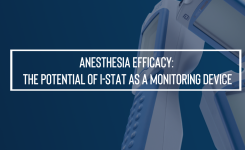Blog
i-STAT and The Challenges of Modern Healthcare
The changing landscape of today’s healthcare industry is greatly affecting how medical institutions address their patients. Due to the shift towards more personalized and preemptive diagnosis and treatments, the usual hospital frameworks are now being altered and maximized. With convenience, timeliness, and accessibility rising as primary priorities, the demand for point-of-care has especially increased in the past decade.
The responsive and anticipatory nature of the POCT technology is best exemplified by the i-STAT blood analyzer. This handheld analyzer takes all the advantages of point-of-care testing then applies them to the following emerging trends and changes that healthcare institutions are bound to face in the 21st century.
1. Patient-centered Care
For today’s patients, receiving the appropriate treatment for their conditions is rather crucial. Health practitioners now acknowledge that each patient has dissimilar cases and requires a distinct set of needs. i-STAT’s fast result processing consequently promotes this transition towards a more personalized healthcare management. Real-time access to results allows for rapid clinical decisions. The patient bedside set-up also allows for healthcare workers to visit patients outside of the hospital’s confines and in their natural surroundings. The patients’ waiting time is especially reduced by 44%. Patient involvement is therefore more engaging since physicians can now immediately discuss test results in great detail.
2. Better Technologies
i-STAT not only keeps up with the rapid changes in the point-of-care industry, but leads it as well. Above all, the Abbott research and development team ensures that the i-STAT analyzer specifically provides for the ever-broadening required parameters of physicians. Presently, the i-STAT blood analyzer has the most comprehensive menu of 25 tests. Its simplified mechanics also allows for non-laboratory staff to easily perform tests.
3. Increase in Geriatric Cases
The welfare of the elderly and those with chronic diseases is greatly becoming a growing concern. This demographic is particularly expected to increase in numbers. Because of these patients’ affected capacity and mobility, today’s medical facilities may require new means of accommodating them. i-STAT has proven to significantly reduce the length of stay when integrated into a hospital setting. In addition, i-STAT’s patient bedside set-up allows for healthcare workers to visit patients outside the hospital confines and in their natural surroundings.
4. Decentralization of Laboratory Testing
The virulence of various infectious diseases certainly rose in the past decades. The markets for companion diagnostics and near-patient health centers are also growing. These factors call for POCT devices that can conveniently deliver results outside the lab without any compromise in quality. i-STAT has proven itself capable of supplying lab-quality results with less of the time and effort usually required in a central lab setting. As a result, disaster response teams, rural health centers, and roaming provincial physicians can now test their patients with confidence.
Sources:
Futrell, K. (2015, June). Laboratory Point-of-Care Testing: A Future Outlook. Retrieved May 21, 2018, from http://www.himss.org/file/1308651/download?token=2jGKS9bM
Abbott Point of Care – Increase Access to Care. (2016, December). Retrieved May 22, 2018, from https://www.pointofcare.abbott/us/en/your-challenges/increase-access-to-care
Kratz, A., MD, PhD, McKenzie-McKie, C. M., MPH, MSc-MLS, (ASCP) CM, Guo, T. W., BS, & Sia, S. K., PhD. (2015, December). Improving Present and Future Patient Care: The History of Point-Of-Care Testing at Columbia University Medical Center . Point of Care: The Journal of Near-Patient Testing and Technology, 14(4), 124-126.








